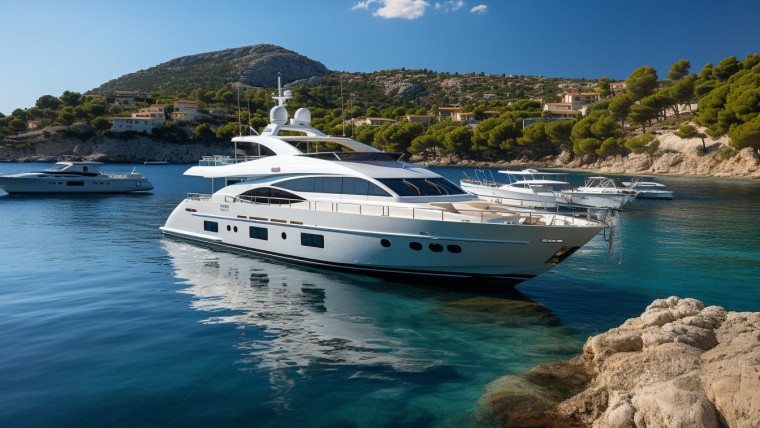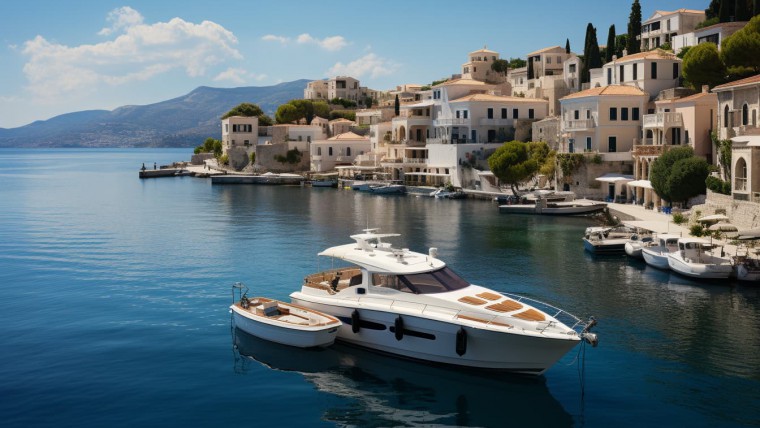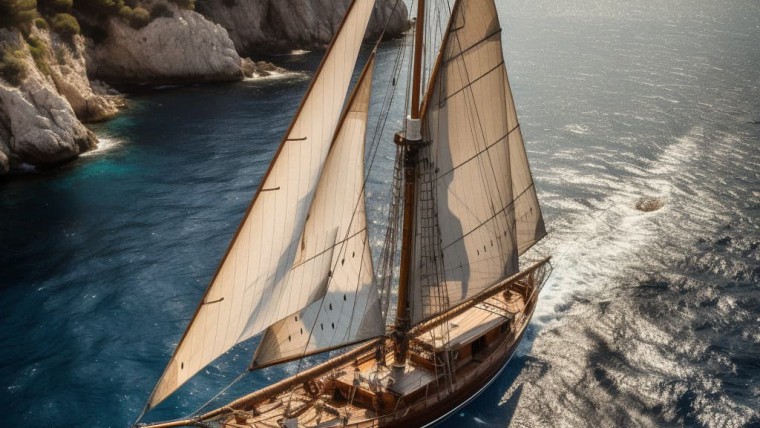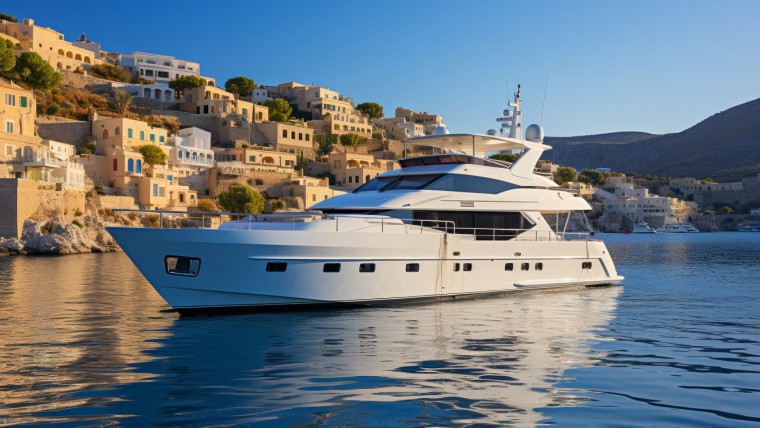Introduction
When you’re out on the water, anchoring your boat is one of the most important skills you can have as a boater. Anchoring provides stability, allows you to fish, relax, and sleep on your boat overnight. However, it’s not as simple as just dropping the anchor overboard and hoping for the best. Proper anchoring techniques and equipment are crucial for keeping your boat safe and secure.
Different types of anchors and their purposes:
There are various types of anchors available on the market, each with their own unique advantages and uses. The most common types of anchors include:
- Fluke anchor (also known as Danforth anchor)
- Plow anchor (also known as CQR anchor)
- Claw anchor (also known as Bruce anchor)
- Mushroom anchor
- Delta anchor
- Grapnel anchor
The choice of anchor will depend on factors such as the type of seabed, the size of the boat, and the expected weather conditions.
The importance of proper anchoring techniques:
Proper anchoring techniques are essential for ensuring the safety of your boat and those onboard. It’s important to have a good understanding of the seabed conditions and weather before selecting an anchor and setting it properly. Using the right scope, snubbing the anchor, and monitoring the holding power are just a few of the techniques that can help you anchor like a pro. In this article, we’ll explore each of these techniques in detail and provide tips for mastering the art of boat anchoring.
The Ultimate Guide to Choosing the Right Boat Anchor
When it comes to anchoring your boat, selecting the right anchor is crucial for ensuring your safety and the safety of your passengers. With so many types of anchors available on the market, choosing the right one can be overwhelming. In this article, we’ll guide you through the process of selecting the perfect anchor for your boat.
Factors to consider when selecting an anchor:
There are several factors to consider when selecting an anchor, including:
- Boat size and weight
- Type of seabed
- Expected weather conditions
- Type of boating activity
- Personal preferences and budget
Anchor types and their uses:
There are various types of anchors available, each with its own unique advantages and uses. We’ll explore the most common types of anchors, including:
- Fluke (Danforth) anchors
- Plow (CQR) anchors
- Claw (Bruce) anchors
- Mushroom anchors
- Delta anchors
- Grapnel anchors
Matching the anchor to the seabed type:
The type of seabed you’re anchoring in will affect the holding power of your anchor. We’ll discuss how to match your anchor to the type of seabed, including sandy, rocky, and muddy bottoms.
How much anchor weight is needed for different boat sizes?
Choosing the right weight for your anchor is crucial for ensuring it holds your boat in place. We’ll provide a general guideline for anchor weight based on boat size.
By the end of this article, you’ll have a clear understanding of the factors to consider when selecting an anchor, the types of anchors available, how to match your anchor to the seabed type, and how much anchor weight is needed for different boat sizes.
Anchoring Like a Pro: A Step-by-Step Guide to Preparing Your Boat
Before dropping your anchor, there are several important steps you need to take to ensure a safe and successful anchoring experience. In this article, we’ll walk you through the process of preparing your boat for anchoring like a pro.
Identifying a suitable anchorage:
Choosing the right location to drop anchor is crucial for safety and comfort. We’ll discuss how to identify a suitable anchorage based on factors such as water depth, wind direction, and surrounding hazards.
Knowing the weather and tidal conditions:
Weather and tidal conditions can affect the holding power of your anchor. We’ll provide tips on how to check weather forecasts and tidal charts to ensure you’re anchoring in safe conditions.
Determining the right scope for the anchor chain:
The scope is the ratio of the length of the anchor rode (the line or chain connecting the anchor to the boat) to the depth of the water. We’ll explain how to determine the right scope for your anchor chain based on water depth and wind conditions.
Checking the anchor chain and rode:
It’s important to regularly inspect your anchor chain and rode to ensure they’re in good condition and free of damage. We’ll provide tips on what to look for and how to properly maintain your anchor gear.
By following these steps, you’ll be well-prepared to drop anchor and enjoy a safe and relaxing time on the water.
Mastering Anchoring Techniques: A Comprehensive Guide
Anchoring your boat properly is an essential skill for any boater. In this article, we’ll cover the key anchoring techniques that will help you stay safe and secure on the water.
Setting the anchor: We’ll discuss how to properly set your anchor, including how to position your boat, how much chain to let out, and how to know when your anchor has set.
Letting out the chain: Properly letting out the chain is crucial for ensuring your anchor holds. We’ll explain how to do this, including how to determine the right amount of chain to let out based on water depth and wind conditions.
Snubbing the anchor: Snubbing is the process of pulling the anchor chain taut to help set the anchor. We’ll provide tips on how to snub your anchor properly and safely.
Digging the anchor in: Once you’ve set your anchor, digging it in can help provide additional holding power. We’ll explain how to dig your anchor in properly, including using your boat’s engine to pull on the anchor chain.
Using multiple anchors: In some situations, using multiple anchors can provide additional security. We’ll discuss when and how to use multiple anchors, including how to position them and how much chain to let out.
By mastering these anchoring techniques, you’ll be well-prepared to anchor like a pro and enjoy your time on the water with confidence.
Anchoring with Confidence
Proper anchoring techniques are essential for any boater who wants to stay safe and secure on the water. By following the steps we’ve outlined in this article, you’ll be well-prepared to drop anchor like a pro.
Remember, choosing the right anchor, preparing your boat, and mastering anchoring techniques are all key factors in anchoring success. With practice and experience, you’ll become more confident and comfortable with anchoring.
In conclusion, whether you’re heading out for a day trip or planning an extended boating adventure, proper anchoring techniques are crucial. By following the tips we’ve provided, you’ll be able to anchor with confidence and enjoy your time on the water to the fullest.
FAQs
The best anchor for your boat depends on several factors, including the size and weight of your boat, the seabed type where you’ll be anchoring, and the weather and tidal conditions. It’s important to do research and consult with experts to determine the best anchor for your specific needs.
The proper way to set an anchor involves positioning your boat upwind or up-current from where you want to anchor, slowly dropping the anchor while backing up, and then letting out enough chain to create the appropriate scope. Finally, you should gently pull the boat back to ensure the anchor is properly set.
Yes, there may be legal restrictions on anchoring in certain areas, such as marine reserves, navigational channels, and designated swimming areas. It’s important to check local laws and regulations before dropping anchor to avoid fines or other legal consequences.
To avoid damaging sensitive ecosystems while anchoring, you can use environmentally-friendly anchors or anchor in designated areas. Additionally, you can avoid dropping anchor in seagrass beds or coral reefs, and use mooring buoys when available. Finally, it’s important to be aware of and follow local regulations regarding anchoring and environmental protection.







